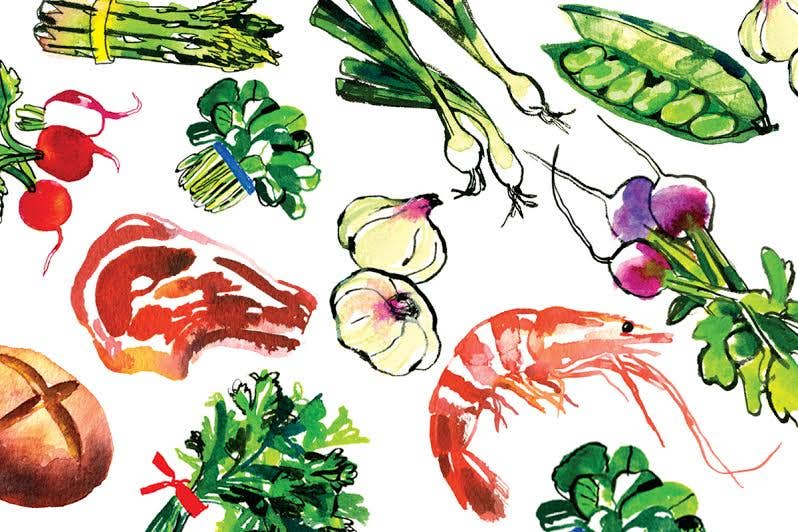
I recently discovered that nearly half of all the sugar consumed by Americans is made not from sugarcane but from sugar beets. Food manufacturers use two-thirds of this country's annual beet sugar crop in baked goods, cereals, candies, ice creams, and beverages; supermarkets sell the rest in granulated, brown, and powdered form. Beets and cane both contain the same sucrose, and sugar from both sources looks and tastes exactly the same.
Minnesota, known as America's Sugar Bowl, ranks first in the nation in sugar beet acreage and processing. It grows eight million tons of the vegetable annually, in the Red River Valley (yes, _that _Red River Valley) along the North Dakota border; its seven sugar factories produce more than two billion pounds of beet sugar each year. Since I live in St. Paul, not far from sugar country, I thought I should try to find out a bit more about this crop. Here's what I discovered.
Beets of various kinds—red, purple, orange, yellow, tan, and white—have been grown since antiquity. In the 16th century, scientist Oliver De Serres discovered that a sugar syrup could be produced from Beta maritima, a Mediterranean variety, but no use was made of his discovery until 1802—when Germany began processing the beet on a small scale. Napoleon subsequently became a champion of the sugar beet, encouraging its planting and the establishment of beet sugar factories in France. The industry soon spread around Europe, and immigrants later brought their sugarmaking skills to America.
A sugar beet takes four months to mature. After the fall harvest, the turnip-shaped roots, which weigh from one to 20 pounds, must be either placed in cold storage or processed immediately, as they tend to rot quickly. In processing, they are washed and sliced, then transferred to large tanks, where very hot water leeches out the raw sugar—which accounts for between 15 and 20 percent of each beet's volume. The beet fiber is processed separately into livestock feed, while the raw juice is purified and filtered, boiled down to a thick syrup, then turned to slush with sugar powder. Beet molasses, used by brewers and yeast manufacturers, is drawn off by centrifuge. The remaining crystals are cooled, dried, passed through screens to separate the grains according to size, then packaged. Do not, as they say, try this at home.
Keep Reading
Continue to Next Story










